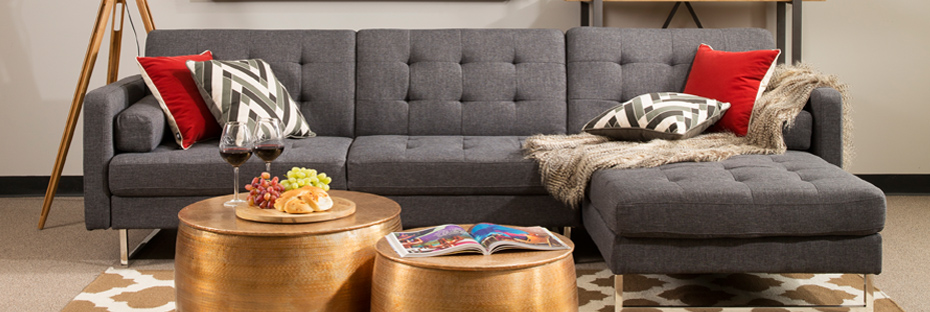Fabric Care

There are two classifications of fabric used in furniture manufacture:
- Natural fibres: derived from animals (e.g. wool), or vegetable matter (e.g. cotton, linen, viscose and acetate).
- Synthetic fibres: e.g. polyesters and acrylics (including micro and macro suedes).
Natural Fabrics
Natural fibres offer extreme comfort given that they easily absorb perspiration and breathe naturally. Fabrics manufactured from natural fibres are hydrophilic, meaning they have a natural tendency to absorb water products. They are also oleophilic, meaning they are susceptible to oil and grease stains. Without protection, these fabrics can be difficult to clean and maintain.
Synthetic Fabrics
Due to improvements in modern technology, approximately 80% of fabrics used in furniture manufacturing today are made from synthetic fibres, derived as a by product of the petro chemical industry. Unlike natural fabrics, synthetic fabrics are hydrophobic, meaning they have a natural affinity to repel water and liquids such as foods, drinks, medicines and other household substances. They are also generally waterproof, crease proof, stretch proof and rot resistant.
However, similar to natural fabrics, synthetic fabrics are oleophilic and have an affinity to absorb grease and oil stains and fatty acids from perspiration.
General Care Instructions
- Vacuum all surfaces and cushions regularly as allowing dust to accumulate will accelerate wear. Vacuum on low speed with the most appropriate vacuum brush. Please note: do not vacuum feather filled cushions - instead just plump these cushions regularly to restore their loft.
- Rotate or reverse cushions regularly where the design permits (recommended once a month).
- Prevent ultra violet damage by keeping furniture away from direct sunlight to help minimise fading and keep furniture at least two metres from heat sources.
- Keep pets and sharp objects away from fabric to avoid fabric discolouration, cuts or pulls. Do not sit on edges of cushions or arms as this can cause fractures in the timber frame or distortion of foam and cushioning.
- Pilling can be expected on some fabrics and is not considered to be a manufacturing fault. Fibre pills can be removed easily using an electric/battery pilling machine, which are available from haberdashery and electronic stores.
Spot Cleaning
To maintain the aesthetic appearance, it is advisable to treat each stain immediately, before it is absorbed into the fabric.
- Do not rub - carefully soak up the spillage by gently ‘blotting’ with a clean, dry, absorbent cloth.
- Clean the stain using a circular motion, always taking care to treat each stain delicately.
- Use a damp cloth rather than a wet one.
- Always use proprietary cleaning agents according to instructions & spot test all care products in a hidden area to make sure they are compatible with your fabric.
- Do not use household detergents or strong chemicals to clean your fabric upholstery. Professional cleaning is recommended by a qualified technician, approximately once per year.
Please note: improper cleaning may void your warranty.
By Dezign recommends Studio Leather & Fabric's range of products to extend the life and enhance the appearance of your fabric furniture.
Feather Sofas
It’s hard to beat the sink in comfort of feather sofas. However, without springs, feather sofas will mould to your shape & so over time feathers will settle. Regular plumping of cushions will redistribute the feathers & return the cushions to their normal shape, feel & evenness.
It is not uncommon for feather filled cushion to lose some feathers over time, which is referred to as feather migration or feather leaching. Feather inserts can lose up to 10% of their feather fill with use, which is a natural occurrence and should not be confused with a product fault. If feathers loosen & protrude through covers these can be simply removed by hand or through vacuuming.
